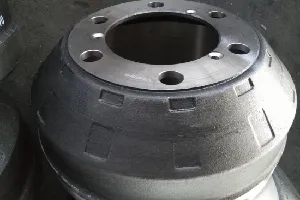
-
 Afrikaans
Afrikaans -
 Albanian
Albanian -
 Amharic
Amharic -
 Arabic
Arabic -
 Armenian
Armenian -
 Azerbaijani
Azerbaijani -
 Basque
Basque -
 Belarusian
Belarusian -
 Bengali
Bengali -
 Bosnian
Bosnian -
 Bulgarian
Bulgarian -
 Catalan
Catalan -
 Cebuano
Cebuano -
 Corsican
Corsican -
 Croatian
Croatian -
 Czech
Czech -
 Danish
Danish -
 Dutch
Dutch -
 English
English -
 Esperanto
Esperanto -
 Estonian
Estonian -
 Finnish
Finnish -
 French
French -
 Frisian
Frisian -
 Galician
Galician -
 Georgian
Georgian -
 German
German -
 Greek
Greek -
 Gujarati
Gujarati -
 Haitian Creole
Haitian Creole -
 hausa
hausa -
 hawaiian
hawaiian -
 Hebrew
Hebrew -
 Hindi
Hindi -
 Miao
Miao -
 Hungarian
Hungarian -
 Icelandic
Icelandic -
 igbo
igbo -
 Indonesian
Indonesian -
 irish
irish -
 Italian
Italian -
 Japanese
Japanese -
 Javanese
Javanese -
 Kannada
Kannada -
 kazakh
kazakh -
 Khmer
Khmer -
 Rwandese
Rwandese -
 Korean
Korean -
 Kurdish
Kurdish -
 Kyrgyz
Kyrgyz -
 Lao
Lao -
 Latin
Latin -
 Latvian
Latvian -
 Lithuanian
Lithuanian -
 Luxembourgish
Luxembourgish -
 Macedonian
Macedonian -
 Malgashi
Malgashi -
 Malay
Malay -
 Malayalam
Malayalam -
 Maltese
Maltese -
 Maori
Maori -
 Marathi
Marathi -
 Mongolian
Mongolian -
 Myanmar
Myanmar -
 Nepali
Nepali -
 Norwegian
Norwegian -
 Norwegian
Norwegian -
 Occitan
Occitan -
 Pashto
Pashto -
 Persian
Persian -
 Polish
Polish -
 Portuguese
Portuguese -
 Punjabi
Punjabi -
 Romanian
Romanian -
 Russian
Russian -
 Samoan
Samoan -
 Scottish Gaelic
Scottish Gaelic -
 Serbian
Serbian -
 Sesotho
Sesotho -
 Shona
Shona -
 Sindhi
Sindhi -
 Sinhala
Sinhala -
 Slovak
Slovak -
 Slovenian
Slovenian -
 Somali
Somali -
 Spanish
Spanish -
 Sundanese
Sundanese -
 Swahili
Swahili -
 Swedish
Swedish -
 Tagalog
Tagalog -
 Tajik
Tajik -
 Tamil
Tamil -
 Tatar
Tatar -
 Telugu
Telugu -
 Thai
Thai -
 Turkish
Turkish -
 Turkmen
Turkmen -
 Ukrainian
Ukrainian -
 Urdu
Urdu -
 Uighur
Uighur -
 Uzbek
Uzbek -
 Vietnamese
Vietnamese -
 Welsh
Welsh -
 Bantu
Bantu -
 Yiddish
Yiddish -
 Yoruba
Yoruba -
 Zulu
Zulu
list the seven major steps for drum brake service
Seven Major Steps for Drum Brake Service
Drum brake systems are a crucial part of a vehicle's braking mechanism, providing reliable stopping power. Over time, these systems may require service to ensure optimal performance and safety. Here are the seven major steps for effective drum brake service.
1. Preparation and Safety Measures Before starting any maintenance work, it's essential to ensure your safety and the safety of others. Park the vehicle on a flat surface, engage the parking brake, and wear appropriate personal protective equipment, such as gloves and safety glasses. Also, make sure to disconnect the battery to prevent any electrical mishaps during the service.
2. Wheel Removal To access the drum brakes, the wheels must be removed first. Loosen the lug nuts before lifting the vehicle with a jack, and then fully remove the lug nuts and the wheel. This provides clear access to the brake drum.
3. Drum Inspection Once the wheel is removed, inspect the brake drum for any signs of wear or damage. Check for scoring, cracking, or excessive heat marks on the drum's surface. If the drum appears severely worn, it may need to be resurfaced or replaced.
list the seven major steps for drum brake service

4. Removing the Drum To remove the brake drum, locate and remove the retaining screws, if present. Pull the drum off the hub; if it’s stuck due to corrosion or wear, gently tap it with a mallet to loosen it. Be cautious not to damage any surrounding components.
5. Inspection of Brake Components With the drum removed, examine the brakes’ internal components—the brake shoes, springs, and hardware. Look for any signs of wear, such as fraying or cracking in the brake shoes. Ensure all springs and hardware are intact and functioning correctly. Replace any worn components to restore the brake system's efficiency.
6. Cleaning Clean the interior of the drum and the brake assembly with brake cleaner to remove dust and debris. This helps to ensure that the new components function optimally and prevents contamination.
7. Reassembly and Adjustment After inspection and cleaning, install the new or refurbished brake components as necessary. Reattach the drum, ensuring it fits securely over the shoes and hardware. Reinstall the wheel, tighten the lug nuts, and lower the vehicle. Finally, pump the brake pedal several times to adjust the brake shoes, ensuring they contact the drum securely.
By following these seven steps, you can ensure that your drum brake system operates efficiently and safely. Regular maintenance not only prolongs the lifespan of your brakes but also enhances the overall safety of your vehicle. If you are uncertain about any step in the service process, it is wise to consult with or hire a professional mechanic to perform the work.
-
What Are Drum BrakesNewsJul.07,2025
-
Understanding Brake Drum MaterialNewsJul.07,2025
-
Semi-Trailer Brake Drum: A Key Component for Extreme Loads and Long-Distance TransportNewsJul.07,2025
-
Drum Brake Pads for SaleNewsJul.07,2025
-
Brake Drums for SaleNewsJul.07,2025
-
Brake Drum ManufacturerNewsJul.07,2025
-
Aluminum Brake Drums: The Future of High-Performance CarsNewsJul.07,2025
